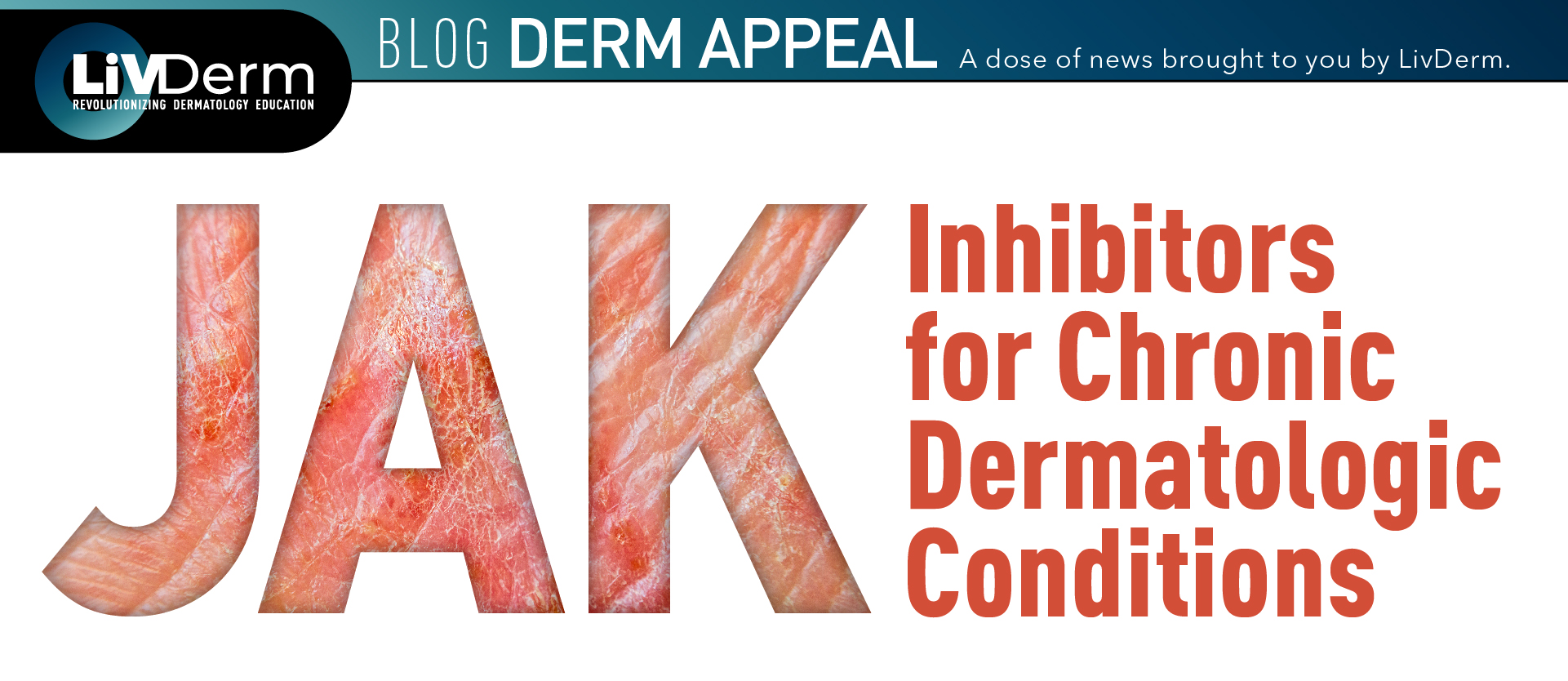Interest in Janus kinase (JAK) inhibitors, targeted systemic treatments used to combat the inflammation common in many chronic illnesses, has grown in recent years. The therapeutic benefits of JAK inhibitors for dermatologic conditions were solidified with the approval of topical ruxolitnib in 2021, as well as promising clinical trials investigating JAK inhibitor use in patients with vitiligo and alopecia areata. Due to the novelty of JAK inhibitor use for skin conditions, dermatologists may need guidance regarding authorization, compliance, adherence, safety, efficacy, patient selection, dosing, and other considerations for using JAK inhibitors in their patients.
JAK inhibitor use in atopic dermatitis
The symptoms and management of atopic dermatitis (AD) can negatively impact quality of life for patients and caregivers. Effective treatment promotes better long-term outcomes, quality of life, and may help prevent the development of other atopic conditions, but finding the right AD therapy can be a challenge for physicians. Symptoms of AD can be controlled with topical agents, long-term treatments such as targeted immunomodulatory agents represent promising options for long-term control. In particular, JAK inhibitors have emerged as novel treatments for AD – one topical agent is approved for AD use and several other are in clinical development.
JAK inhibitor use in other dermatologic conditions
Recent small clinical trials are exploring the use of JAK inhibitors to treat alopecia areata (AA), a chronic, immune-mediated form of alopecia characterized by hair loss in localized patches. Because JAK inhibitors block the T cell-mediated inflammatory response thought to be responsible for AA pathogenesis, the hypothesis is that the use of these agents for patients with AA may leading to a reversal of hair loss. No JAK inhibitors are approved for AA treatment at this time.
Another chronic dermatologic condition researchers are investigating as a target for JAK inhibitor use is vitiligo, an autoimmune disorder characterized by patchy depigmentation in the skin, hair, or both. Although therapeutics for vitiligo have been studied, effective treatments are scarce because the understanding of vitiligo pathogenesis is incomplete. In ongoing studies, JAK inhibitors are being investigated for the potential to block IFN-γ signaling, contributing to re-pigmentation in individuals vitiligo.
Considerations for immunomodulatory therapies
Potential side effects such as secondary immunocompetence are possible with all immunomodulating agents. Therapies like JAK inhibitors are designed to alter the immune system to treat disease, and may also cause unintended immune responses, but this risk does not negate the value of these medications when necessary to manage disease. In 2021, the U.S. Food and Drug Administrationn (FDA) released a warning about an increased risk of serious side effects in certain patients taking the JAK inhibitors tofacitinib, baricitinib, and upadacitinib. They noted increased risk of major adverse cardiovascular events, malignancy, thrombosis, and mortality in patients with a history of smoking, heart problems, stroke, or blood clots, and advised that these JAK inhibitors be reserved for patients who’ve had an inadequate response or intolerance to other drugs such as tumor necrosis factor blockers.
Key takeaway
JAK inhibitors have demonstrated marked improvement for many patients with AD and show promise for those with other conditions such as AA and vitiligo, but there is no “magic bullet” to cure chronic dermatologic conditions; JAK inhibitors won’t work for every patient and have risks of unintended side effects as do other immunomodulating agents.
To learn more about the use of JAK inhibitors in atopic dermatitis, attend LiVDerm’s upcoming live webinar A New Wave of Systemic Treatments: Atopic Dermatitis, Meet JAK.
















